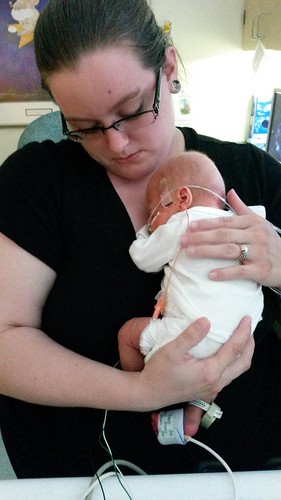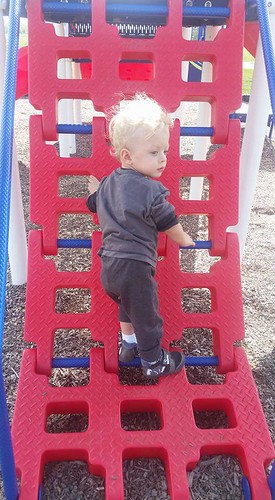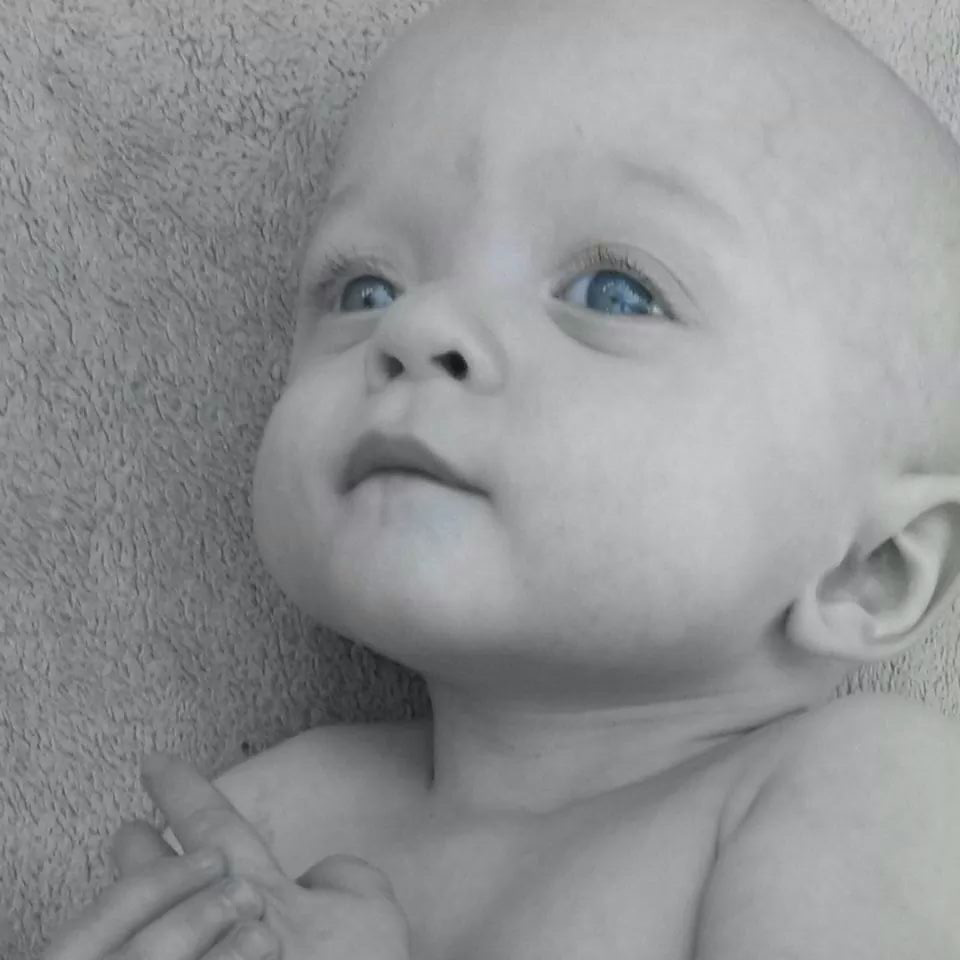Writer / Debbie Robertson
Photos Provided
Molly Coraggio of Greenwood believes in modern day miracles, and every day her infant son awakens, her belief is reinforced. Parker Lee Coraggio was born at 22 weeks gestation, placing him in an “elite group” of micro-premature infants with a less than 22 percent chance of surviving to full- term.
Molly and husband Bruce Coraggio were excited to be expecting their first son due in September 2013. Molly’s pregnancy had been “normal,” so on May 19 when Molly visited her doctor with what she thought to be a urinary tract infection, she had no reason to be concerned. “My back had been hurting, and they gave me a shot and sent me home,“ explained Molly. Twelve hours later though, she was back with more pain, and this time, she was admitted to the hospital. Molly was in labor and was immediately confined to bed rest with the charge of resting and “growing her infant” to term. Turns out, baby Parker had other plans.
 A Surprise Delivery
A Surprise Delivery
Within 48 hours, the amniotic sac broke, throwing Molly into full-blown labor. With such a low-survival rate for infants born this premature, Molly and Bruce were asked the hard question: did they want to try to save their son? In spite of having been offered only a five percent chance of survival, without any hesitation, they answered “Absolutely.”
Thus, with only one push due to his minute size, Friday, May 24, Parker Lee Coraggio was born. “It was at least four hours before we were able to see him because they immediately went to work on him.” Weighing in at a mere 1 pound, 6 ounces and only 12 inches long, Parker’s well-being was beyond critical.
Premature infants, those born before 37 weeks, are cared for by a team of healthcare professionals in a NICU (Neonatal Intensive Care Unit), and not all hospitals are so equipped. Fortunately, St. Francis Hospital has an NICU, and it became Parker’s home for the next 126 days. Molly, however, was released two days after giving birth.
During the crucial first 48 hours, Parker’s weight dropped to 1 pound. “He was as red as a tomato. You could practically see through his skin. His little eyes were still fused together, and his ears were largely buds,” describes Molly. “His tiny little skull was less than the size of a golf ball.” As is standard procedure for anything but standard birth, he was placed in an incubator to assist with keeping his body temperature up and harmful bacteria out.
But in spite of a grim outlook, long and difficult days and a dramatically low survival rate, Parker miraculously thrived. The goal, aside from the larger outcome of keeping Parker alive, was to grow him to his original due date of September 21. Mini-meals were courtesy of a feeding tube. Breathing was accomplished via a ventilator. For nearly every bodily function, there was a network of wires, tubes and lines to keep Parker alive … alive but not without setbacks along the way.
 Complications Continue
Complications Continue
Shortly after his birth, Parker developed a kidney infection and had to be transported to Riley Hospital for Children at IU Health where treating acute infections in premature infants is more routine. He stayed there a full month while a second team of healthcare professionals poured over him.
“It was two months before we first heard his voice, and he squeaked like a kitten,” remarked Molly. “But every day he lived, his odds of survival increased another percentage point.” According to The New York Times, only a “tiny minority of micro premature infants survives if medically treated, and of those, only a few are without any health issues. The vast majority suffer serious medical issues.”
Parker’s crib for more than 90 days was an incubator, his nursery was the NICU. At times, infections developed isolating Parker to private areas. But tiny Parker had an enormous team of healthcare workers constantly treating him, monitoring him and growing him including specialists for his heart, lungs, kidneys, ear, nose, throat and eyes, to name a few.
And of course, his No. 1 supporter, his mother, never gave up on him. “I had a tremendous trust in his healthcare team and knew they were doing everything they could do to help him survive.”
Going Home
In September, when Parker should have just been making his first appearance, he made his grand debut to his home. His breathing was still being assisted, and his heart was being monitored. And of course, he was extremely small.
“We were constantly feeding him. As it turned out, we thought he had a milk allergy, so he had to switch from breast milk to a prescription formula,” explained Molly. Parker also had severe acid reflux, causing him to vomit through both his nose and mouth. Switching formula was the fix.
However, having been released from the hospital brought a new set of demands including all those that any infant requires. Adding to the constant feeding and subsequent diaper changing round-the-clock were the special sleep arrangements made to keep his tiny head upright so he would not choke in his sleep. The solution: a bouncy chair. Parker had been fed for so long via a feeding tube that swallowing on his own was and still remains an issue (delayed muscle development because of the ever-present feeding tube.)
 Parker’s first year brought many “firsts,” although not the ones that new parents normally look forward to. It took more than eight months before Parker first laughed and was still only rolling on his sides. It was 10 months before he was able to eat from a spoon. He was more than 1 before he crawled and nearly 2 before he walked. But each first was indeed a milestone to marvel, and with every passing day, Parker grew bigger, stronger and more astonishing.
Parker’s first year brought many “firsts,” although not the ones that new parents normally look forward to. It took more than eight months before Parker first laughed and was still only rolling on his sides. It was 10 months before he was able to eat from a spoon. He was more than 1 before he crawled and nearly 2 before he walked. But each first was indeed a milestone to marvel, and with every passing day, Parker grew bigger, stronger and more astonishing.
In September 2015, the miracle that is Parker Lee Coraggio celebrated his “should have been” second birthday … technically he was 2 ½. “Today Parker weighs about 24 pounds, loves to climb and has a vocabulary of nearly 200 words,” says Molly.
He still undergoes therapy four times a week for a variety of issues and will undoubtedly continue, in one form or another, until he’s at least 3 years old. “It’s time-consuming yet completely worth it,” says Molly.
Convincing Molly and Bruce that there are no more miracles today would be a complete waste of time. They’d just tell you their marvelous story of Parker Coraggio and let you decide.
It’s a small price to pay for such a huge blessing.






